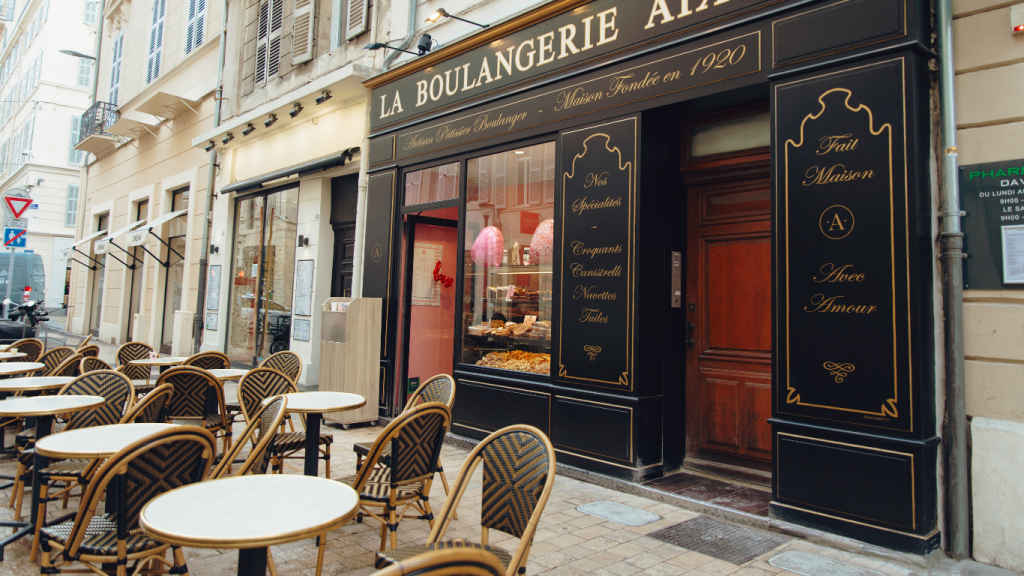Recently, when we stopped to smell the flowers, we realized French bakeries have been springing up like, well, wildflowers. After finding more than a half dozen within a 20-minute drive, we started paying attention.
Bakery café chains are eager to make their mark in the U.S, but we love the fiercely old-school independents for their methods, ingredients and loyalty to their sister-/brotherhood of pǎtissiers. As post-pandemic café culture shifts away from on-the-go morning joe, it shifts towards more relaxed, community-oriented gathering spaces. This is an opening for the many French pâtisserie and viennoiserie popping up across the country.

An Armenian, Pascal Rosée, opened the first coffee house in Paris in 1672 in Place Saint-Germain, but not until the opening of Café Le Procope around 1689 did the concept catch on. Le Procope, an iconic gathering place for many actors, writers, musicians, philosophers and revolutionaries, enabled the mix of coffee, tea, hot chocolate and ice cream with history-altering conversation. Designated Paris’ oldest café, it is where café culture as we know it began.

Additionally, there’s been a shift in the way we view baking. It’s become an art form, thanks to The Food Network, social media, and the overall desire to learn about the food we eat. Thus, the demand for better-quality baked goods keeps rising (no pun intended). And so, we set off to find the best of these establishments.

The heart and soul of French pastry is undoubtedly the croissant. Supposedly, Marie Antoinette, who ascended the throne in 1774 at 18, missed the Viennese crescent rolls of her youth, kipferl, She challenged her royal bakers to recreate them. It took more than a half century (Marie had already lost her head) for kipferl to be produced in France, when Austrian artillery officer August Zang founded a Viennese-style bakery in Paris. The heavy brioche-dough crescent rolls “croissants”.

Fortunately, in 1915, Sylvain Claudius Goy recorded what some say is the first-known French version of the modern croissant recipe. Goy transformed the heavy brioche recipe by utilizing a “laminated” (layered) yeast dough. A technical variation of traditional brioche, croissants are made by rolling cold butter into each layer of dough, refolding, rolling in more butter and refolding, ad infinum, as the dough rises – a physically demanding and time-consuming technique. The butter creates steam as it melts during baking, which puffs up the layers and adds tender richness. Hence, “Puff Pastry.”

Puff pastry, also used for dessert pastries such as Napoleons, is part of the pâtissiers’ trinity, along with Brioche dough, incorporating butter and eggs into bread dough; and Choux pastry, for eclairs and cream puffs, made with flour, butter, water, and slowly-added eggs, one at a time (high moisture content creates steam during baking). With this knowledge, go forth and explore our françoise bakery cafes.








